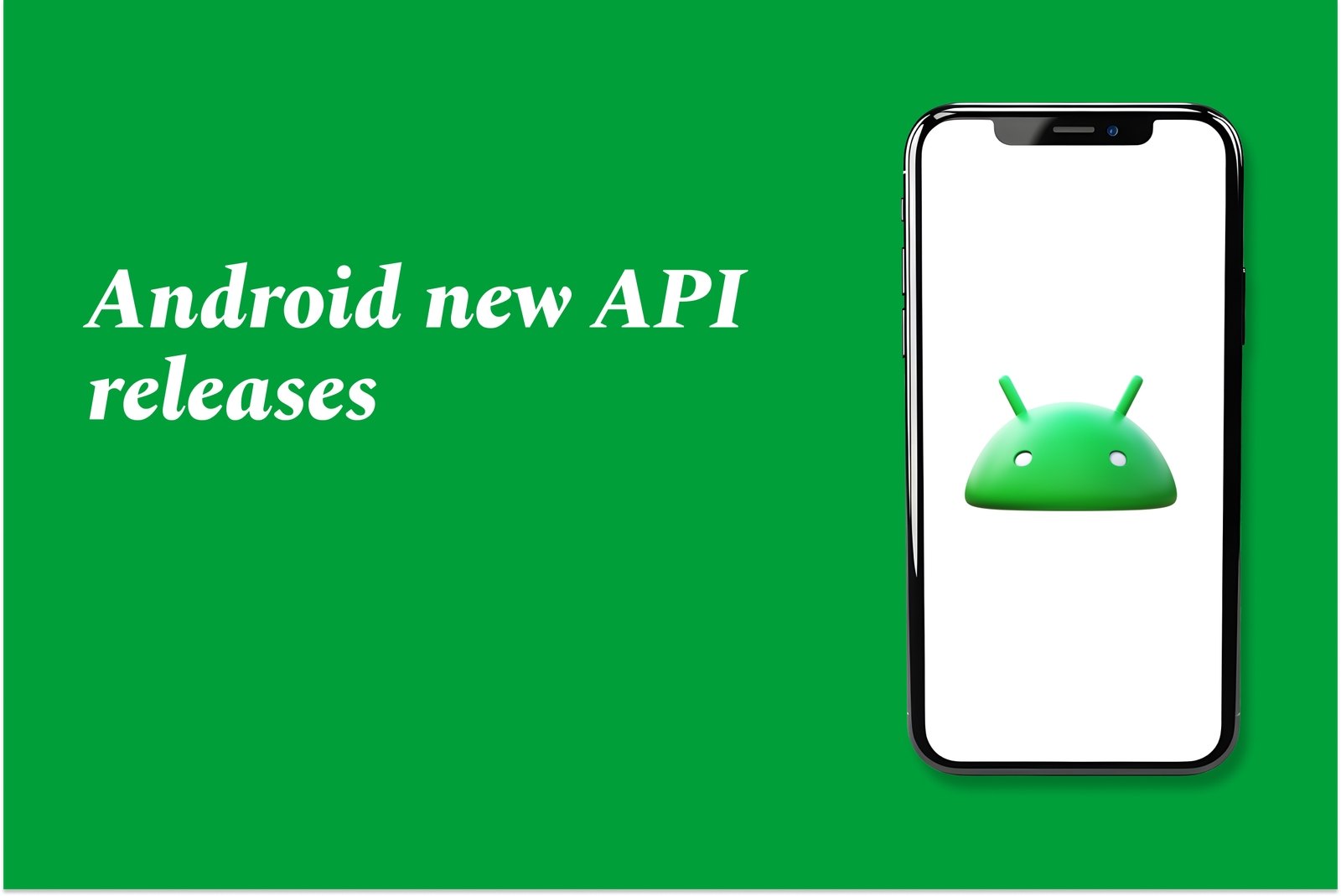Android New API Releases
Android's new API releases now include two SDK updates annually: a major release with new APIs and behavior changes in Q2, and a minor release in Q4 with feature enhancements but no app-impacting changes, enabling faster innovation and improved app compatibility.
Android new API releases
1 ) Introduction to More Frequent Android SDK Releases
Android aims to accelerate innovation and improve quality by increasing the frequency of SDK releases. Building on prior initiatives like Project Treble and Google Play services updates, Android plans to deliver two major SDK releases in 2025, enhancing app and device capabilities with newer APIs and improved stability.
2 ) Details of the 2025 Android SDK Releases
Q2 Major Release: This significant update will include new developer APIs and behavior changes that could affect app functionality. Scheduled for Q2 to align with device launch timelines, it marks the primary major release of the year.
Q4 Minor Release: A smaller update focusing on feature enhancements, bug fixes, and new APIs but without app impacting behavior changes. This minor release will differ by not incrementing the main API level, instead introducing a minor API level for developers to leverage.
3 ) Impact on Developers and Apps
Developers must conduct annual compatibility testing earlier than before due to the Q2 major release. The Q4 minor release minimizes compatibility burdens by avoiding behavior changes. A new manifest attribute will allow apps to specify a minimum minor API level requirement, with support starting from the Q2 preview release. Google Play’s target API level requirements remain tied to the major API level, with one annual requirement.
4 ) Preparation and Best Practices for Developers
Developers should update their build systems and CI pipelines to handle both major and minor API levels properly. Compiling apps against the new SDK and utilizing the compatibility framework will assist in adapting to behavior changes. Meta’s example highlights the benefit of frequent compilation against beta releases and comprehensive automated testing to accelerate readiness and adoption of new SDK features.
5 ) Ongoing Quality and Collaboration with Partners
In addition to the two main SDK releases, Android will continue quarterly incremental updates in Q1 and Q3 focused on quality improvements. Collaboration with device manufacturers is ongoing to maximize timely delivery of the new releases across the ecosystem.
Summary:
The new Android release strategy introduces two SDK releases per year (major in Q2 and minor in Q4 ), facilitating faster innovation and higher quality for developers and users. Developers should prepare for earlier compatibility testing, adapt tooling for the new minor API levels, and leverage the compatibility framework to ensure smooth transitions and enhanced app experiences.
https://justacademy.in/news-detail/android-system-ui-refresh-news
https://justacademy.in/news-detail/android-launchers-with-new-capabilities
https://justacademy.in/news-detail/android-community-app-developer-stories
https://justacademy.in/news-detail/building-ai-first-apps-with-flutter
https://justacademy.in/news-detail/android-home-automation-integrations
Related Posts
Java supports GDPR and data privacy by enabling secure data handling through encryption, controlled access, and precise data management. It allows developers to minimize PII exposure, ensure data confidentiality, and design workflows that comply with data protection regulations effectively.
Java code quality tools have evolved to include advanced static analysis, integrated security checks, and AI-powered code reviews. These updates help developers detect bugs, enforce coding standards, and enhance security, streamlining the development process and improving overall code reliability.
Java remains a cornerstone in big tech companies, evolving with modern features like records, pattern matching, and virtual threads. Its robust ecosystem, enhanced performance, and growing AI integrations keep it vital for both legacy systems and innovative new projects.
Java and CI/CD pipeline optimizations streamline Java application development by automating builds, tests, and deployments. They improve efficiency through parallelization, caching, and secure secrets management, enabling faster feedback loops and more reliable, scalable software delivery.
Java supports modern cryptography standards through its flexible Java Cryptography Architecture (JCA), enabling integration of advanced algorithms like AES, EdDSA, and post-quantum tools. Libraries like Bouncy Castle offer FIPS-certified, hardware-accelerated implementations for secure development.
Java 23 enhances record patterns by enabling concise, direct destructuring of record components within pattern matching, simplifying type checks and data extraction. This improvement boosts code readability and expressiveness by reducing boilerplate in handling immutable data classes.
Java remains a top choice for mobile app backends, powering scalable, secure, and high-performance server-side solutions. Latest trends include cloud-native microservices, reactive programming, and enhanced JVM optimizations, enabling efficient, flexible, and robust mobile backend development.
Java SE 24 and LTS Java SE 21 offer enhanced features and performance, while Apache Spark 4.0.0 introduces Scala 2.13 support and advanced ML and SQL capabilities. Together, they empower developers to build scalable, high-performance data applications with modern tools.
JUnit 5 modernizes Java testing with a modular architecture, improved assertions, and seamless Java 8+ support. Beyond JUnit, tools like Mockito and AssertJ enhance mocking and assertions, creating a powerful, flexible ecosystem for writing clean, efficient Java unit tests.
Java plays a pivotal role in cloud automation tools by providing a robust, platform-independent language used to build scalable automation frameworks like Jenkins and Selenium, enabling efficient CI/CD pipelines, testing, and orchestration across diverse cloud environments.










